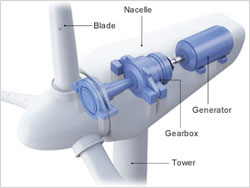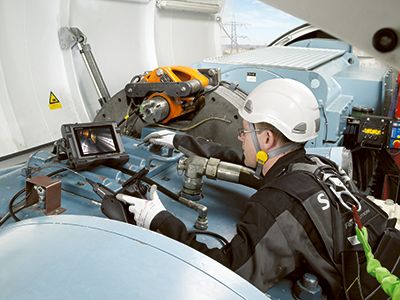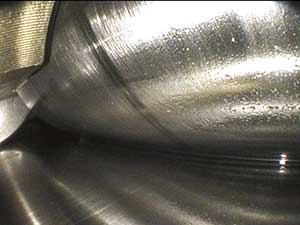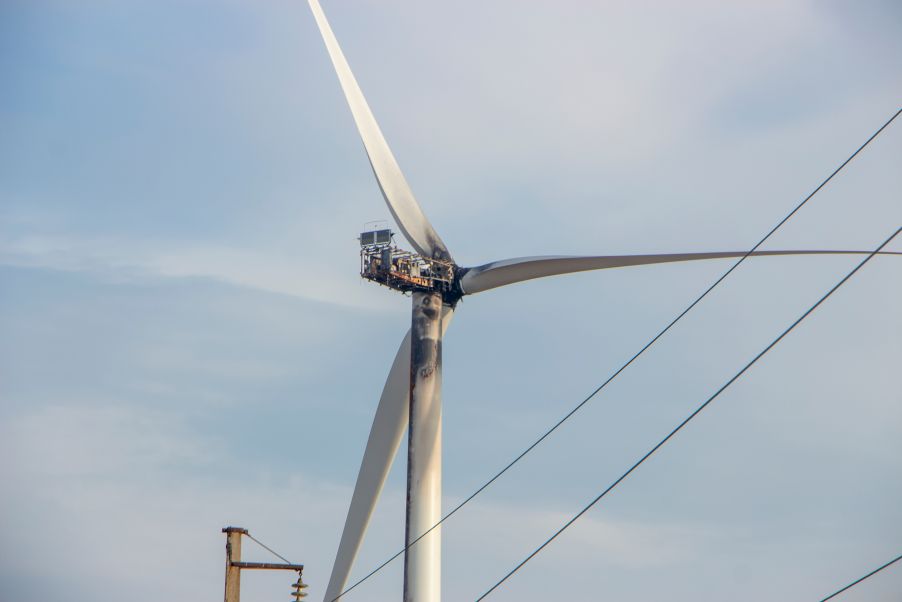A wind turbine’s gearbox, generator, and blades are the focus of intensive maintenance because (1) they’re subject to a lot of stress and wear and (2) they are costly parts to repair. Although gearbox failure is relatively rare—once a decade on average—the downtime for a wind turbine while waiting for this part to be repaired can be almost half a year.*
A typical 2.4-megawatt (MW) wind turbine generates around a $1,000 (USD) worth of electricity per day, so several months of downtime can be very costly in terms of lost revenue. Catastrophic gearbox failure, such as a fire due to overheating, is also a possibility. In that case, the wind turbine may be permanently out of commission.
Minimize Costly Downtime—Wind Turbine Remote Monitoring and RVI
Between up-tower visits for oil sampling and noise checks, the condition of wind turbines is typically monitored using a supervisory control and data acquisition (SCADA) system or a condition monitoring system (CMS). The SCADA or CMS device collects vibration and oil inline data from the wind turbine to help predict or detect faults in the blades, main bearings, and gearbox up to 30 days before a failure.

However, SCADA and CMS error information does not pinpoint the exact faulty part or specify the failure conditions. Furthermore, a 30-day warning in the case of gearbox failure could still leave your wind turbine out of commission for several weeks while waiting for parts. Supplementing your preventative maintenance strategy using a remote visual inspection (RVI) device to see inside the gearbox can give you an earlier and more precise indication of the faulty component.
Internal Visual Inspection Supports Intelligent Decision-Making to Prevent Failures
With a nearly six-month delay in the delivery and replacement of certain gearbox components, the earlier you can determine which part you need, the shorter the downtime for the wind turbine. And knowing the potential failure conditions enables you to make proactive and informed decisions about your parts purchase and maintenance plan. Periodic borescope or videoscope inspections during low wind season, for example, can help you monitor any internal deterioration in the gearbox and possibly prevent equipment failures.
 Internal gearbox inspection using a videoscope |  View inside a gearbox on the videoscope screen |
Stay tuned for our upcoming post exploring how you can use borescopes and videoscopes to maintain your wind turbine to keep it running.
*According to a 2018 report by Deloitte Tohmatsu, the average downtime of gearbox failure is 167 days as the delivery time of a new gearbox or gearbox parts is long.
Related Content
IPLEX™ G Series Wind Turbine Inspection Solutions
A Tip to Save Time in Wind Turbine Inspection
Maintaining Uptime in Turbine Inspections Using the IPLEX NX Videoscope
Videoscope Inspection of Bearings for Wind Power Generators
Wind Turbine Inspection Solutions: At the Heart of Your Process
Get In Touch


